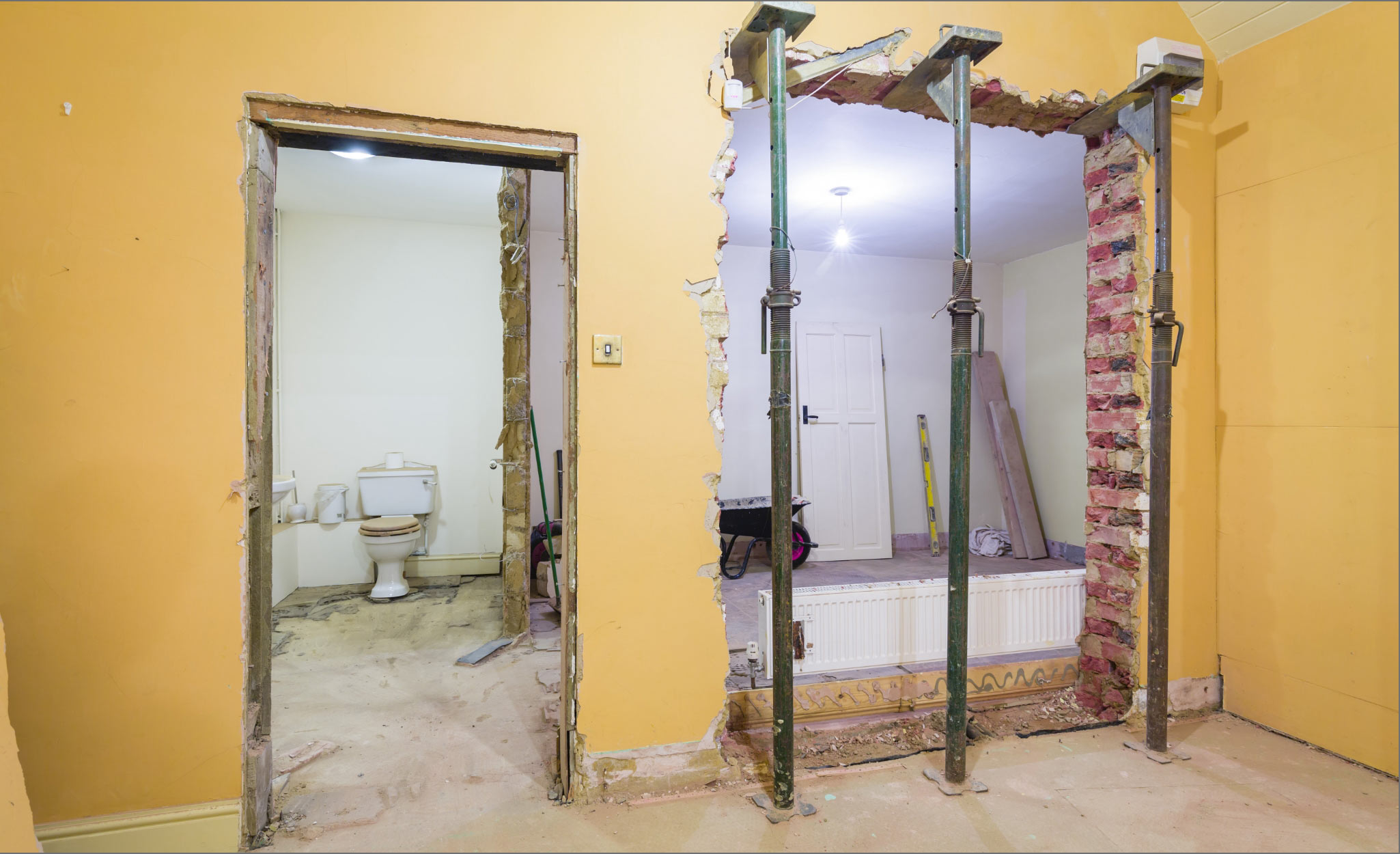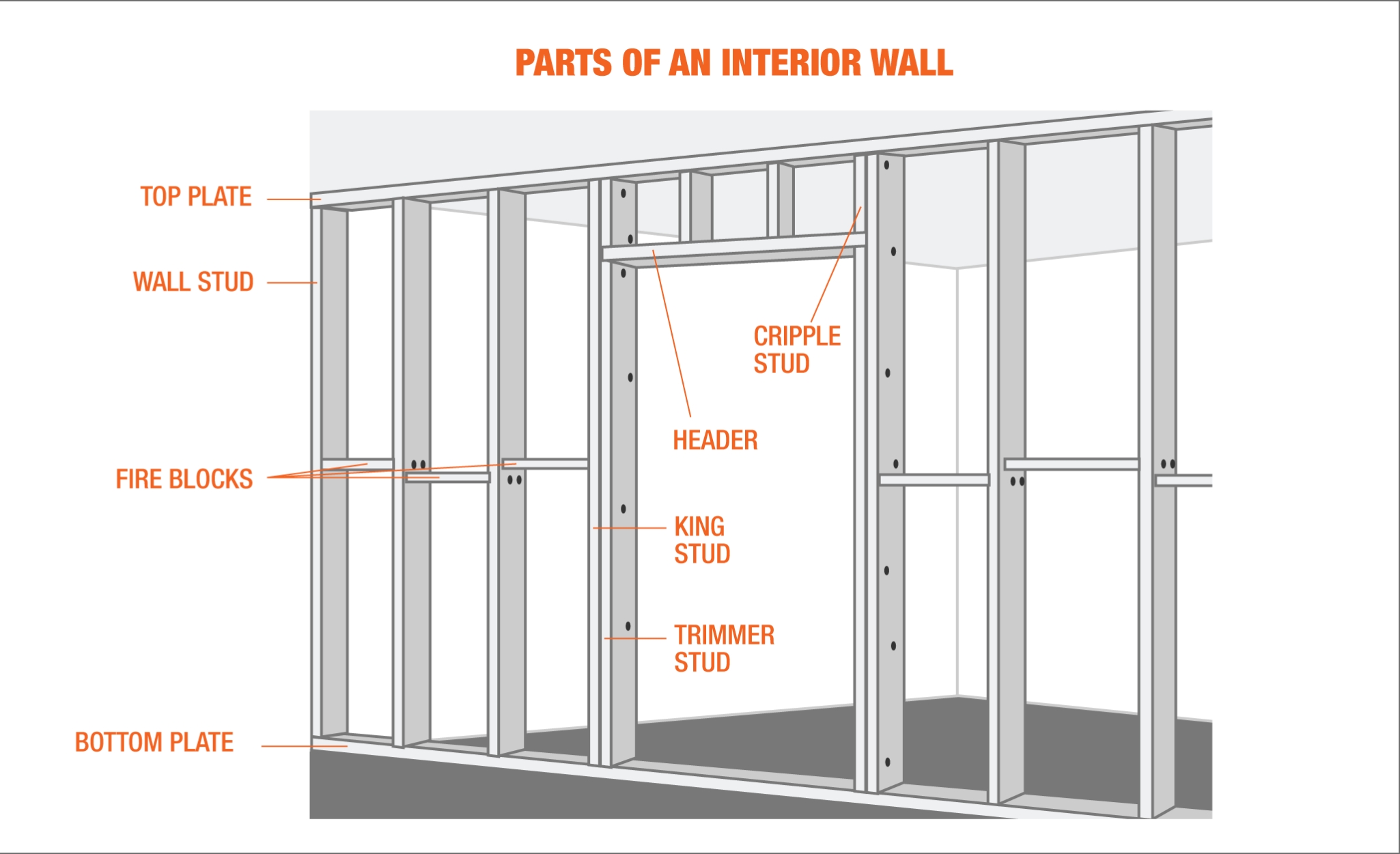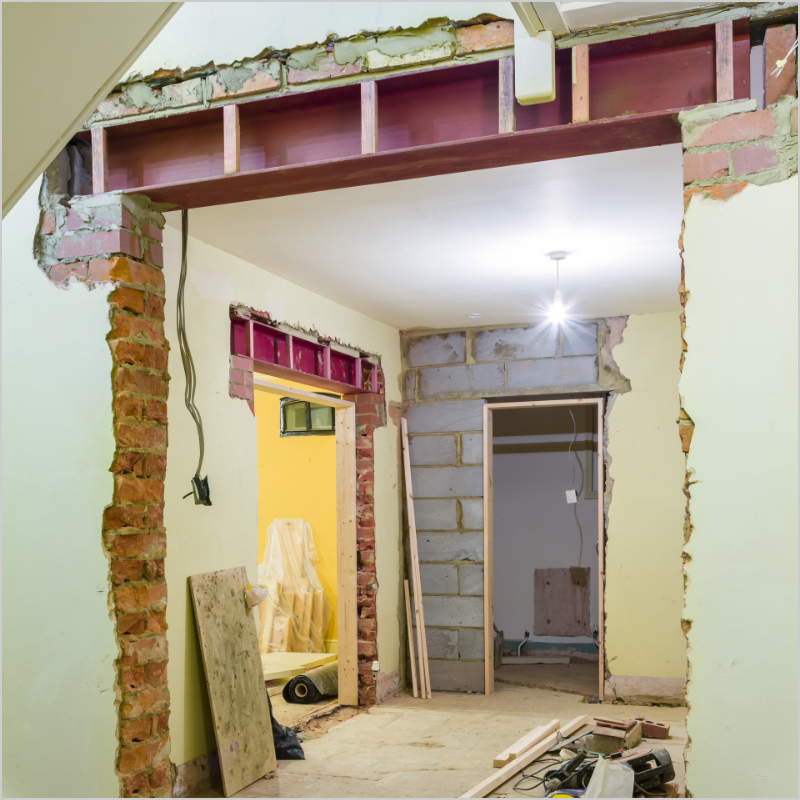How to Tell if a Wall Is Load Bearing

Last updated August 12, 2024
Removing walls can open up floor plans and increase the property value. But removing the wrong wall can bring the house down during a remodeling or renovation job. Always determine if a wall is load bearing before making removal plans.
This guide reviews how to determine if a wall is load bearing and the costs of removing it.
Table of Contents
What Is a Load-Bearing Wall?
How to Know if a Wall Is Load Bearing
What Is the Cost to Remove a Load-Bearing Wall?
More Tools. More Products. More Perks.
What Is a Load-Bearing Wall?

Load-bearing walls, sometimes called simply “bearing walls,” support the weight of the floor or roof structure above them. They are designed to transfer the weight from the roof, through the floors and down to the foundation.
Bearing walls have a point load, such as the bottom of a support column, where the weight of the load transfers to the support structure. Walls with a uniform load distribute the weight evenly along the structure.
Non-load-bearing walls are sometimes called “partition walls” or “curtain walls”. You can remove partition walls and the structure will remain intact.
Partial walls extend partially into a room to divide or mark the transition of one section of a space to another, such as from a living room to a dining room. Some partial walls may have support beams installed, so do not assume partial walls are never load-bearing walls.
How to Know if a Wall Is Load Bearing

The easiest way to identify load-bearing walls is to review the building’s blueprints. Here are other ways to tell if walls are load bearing.
- Exterior walls are almost always load-bearing walls. Some homes built in the past 50 years only use the front and back exterior walls as load-bearing walls, while most older homes use all the exterior walls to bear loads. Any exterior wall that stands on the foundation sill can be considered load bearing.
- Walls that run perpendicular to the joists are load-bearing walls. Walls that are parallel to the joists rarely are, but sometimes a bearing wall will be aligned directly under a single joist.
- If purlin bracing is attached to the top of a wall or is supported by a wall, it’s a load-bearing wall.
- From a basement or crawlspace, check to see if another wall or support structure is directly below a first-floor wall. If a wall has a beam, column or other wall directly below or following its same path, it’s a load-bearing wall.
- Walls more than 6 inches thick are usually load-bearing walls.
- Walls in the center of a building usually support most of the roof’s weight.
- Walls that end in supports or columns are probably load-bearing walls.
- Many masonry walls are load bearing, especially exterior walls. Some masonry walls, such as manufactured stone veneer walls, are too lightweight to accept loads.
Consult with a home inspector if you have any uncertainty over whether a wall is load bearing or not.
What Is the Cost to Remove a Load-Bearing Wall?

Removing a load-bearing wall is more costly and complicated than removing a partition wall. Make sure your client understands the expense of making structural changes.
The construction costs for removing a load-bearing wall in a single-story home can range from $2,000-$5,000. If the job includes rerouting plumbing and electrical wiring, this range can increase to $4,000-$10,000. Second-story load-bearing walls can cost from $9,000-$15,000.
In addition to removing the bearing wall itself, these costs include material delivery, drywall removal and installation of temporary supports. Once the wall has been removed, the new beam, drywall and finish also must be installed.
Many cities require inspections to determine if a wall is load-bearing before removal. The above costs do not include permits or inspection fees.
More Tools. More Products. More Perks.

Be more competitive and boost your bottom line with Pro Xtra, The Home Depot's loyalty program built for Pros. Sign up today to access the enhanced Pro Online Experience, built with the online business tools and time-saving features Pros need.
Authorize employee in-store purchases quickly and securely via text. When Pro Xtra members enroll in Text2Confirm, you have total visibility to a detailed list of everything your employee is buying.
































